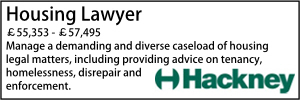Regulator of Social Housing warns of worsening risks to viability for some social landlords
- Details
The Regulator of Social Housing (RSH) has warned that constrained financial headroom is reducing the capacity of the sector to manage downside risk and increasing the risk that governance failures will lead to financial distress.
Its annual sector risk profile report shows that viability risks have intensified over the last year, and social landlords are facing significant and competing pressures to deliver both more and better social homes against a backdrop of higher borrowing costs.
The regulator stressed the importance of social landlords operating efficiently in their efforts to remain financially viable, so they can carry out works to tackle problems such as cladding on high-rise buildings, and address other issues like damp and mould, which now accounts for half of the severe maladministration cases reviewed by the Housing Ombudsman.
London and other urban areas are experiencing the most acute financial pressures particularly where large numbers of flats need building safety works.
Additionally, RSH warned that these challenges are expected to persist for the foreseeable future, “as social housing undergoes a long-term shift, with higher borrowing costs and an ongoing need to maintain and invest in tenants’ existing homes and build much needed new homes for the future”.
Fiona MacGregor, Chief Executive at RSH, said: “Most housing associations are investing record amounts in new and existing homes without threatening their financial viability.
“However, some individual landlords face particular pressures, and we expect those to sustain for some time before the position eases.”
She added: “There is very little margin for error, and it is absolutely critical that landlords are well run, with robust systems for identifying and mitigating risks.
“Boards must maintain a real clarity of purpose to successfully navigate these competing demands while remaining financially viable.”
The RSH revealed that, for the first time since 2009, the cost of servicing debt for private registered providers (PRPs) exceeded net earnings last year. In aggregate terms, forecast sector interest cover over the next five years is just 111%.
Harry Rodd
Must read
Fix it fast: How “Awaab’s Law” is forcing action in social housing
Housing management in practice: six challenges shaping the sector
Why AI must power the next wave of Social Housing delivery
Sponsored articles
Walker Morris supports Tower Hamlets Council in first known Remediation Contribution Order application issued by local authority
Unlocking legal talent
09-12-2025 1:00 pm
11-12-2025 11:00 am







































